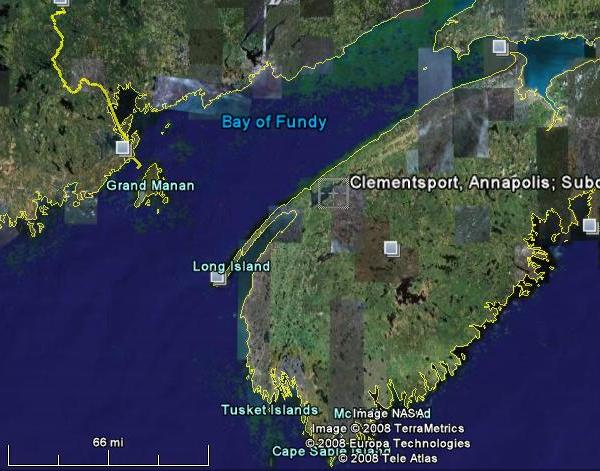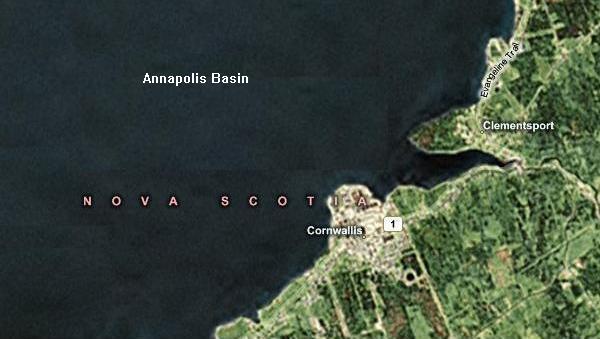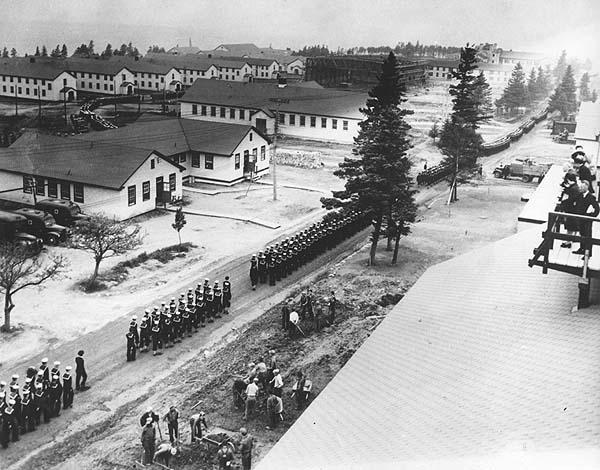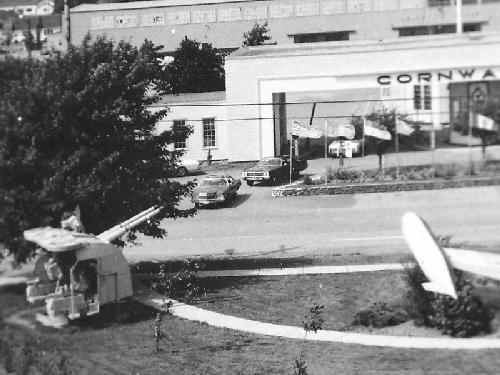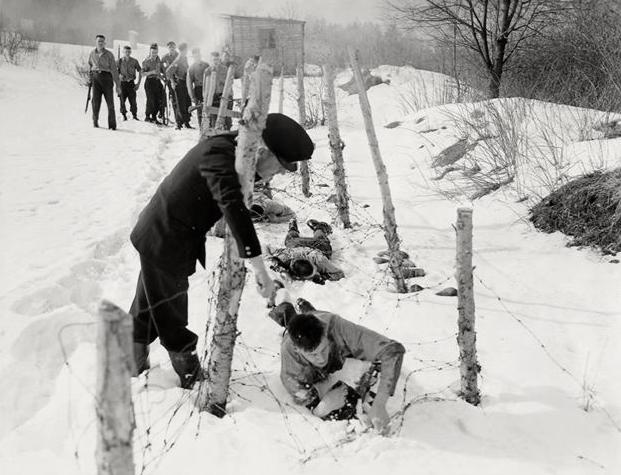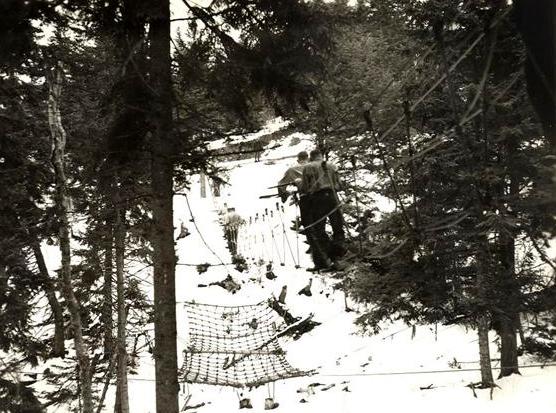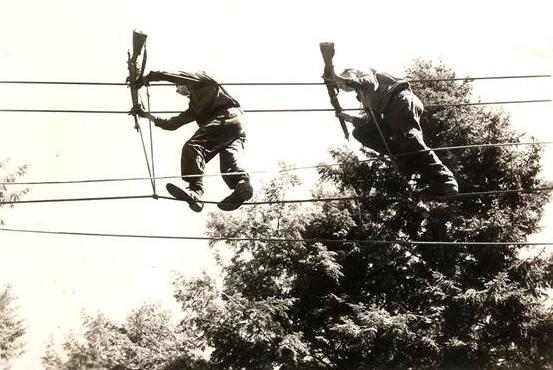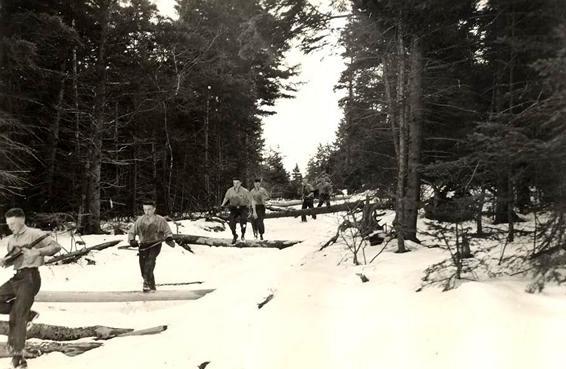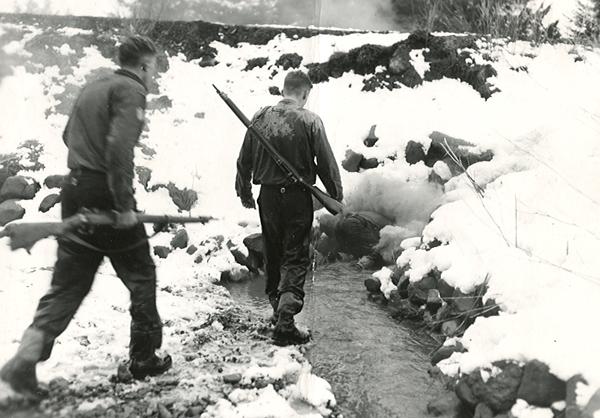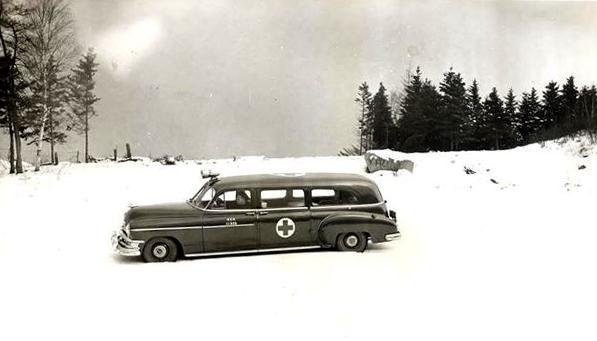| From a different vantage point, this camera is situated atop the Seamanship
School, looking roughly NW. The troops are marching down Broadway.
The 'H' shaped building on the left contains the tailor and barber shops,
(at least from 1961 onwards). The Dry Canteen is the building top
centre, with the dark Gymnasium building under construction behind it.
Once again, the South Block can be seen on the other side of the Gym as
can part of the Wardroom at the very top of the photo on the right, behind
South Block. (From the collection of H.B. Jefferson [1] Via Gary
Pollock) |
